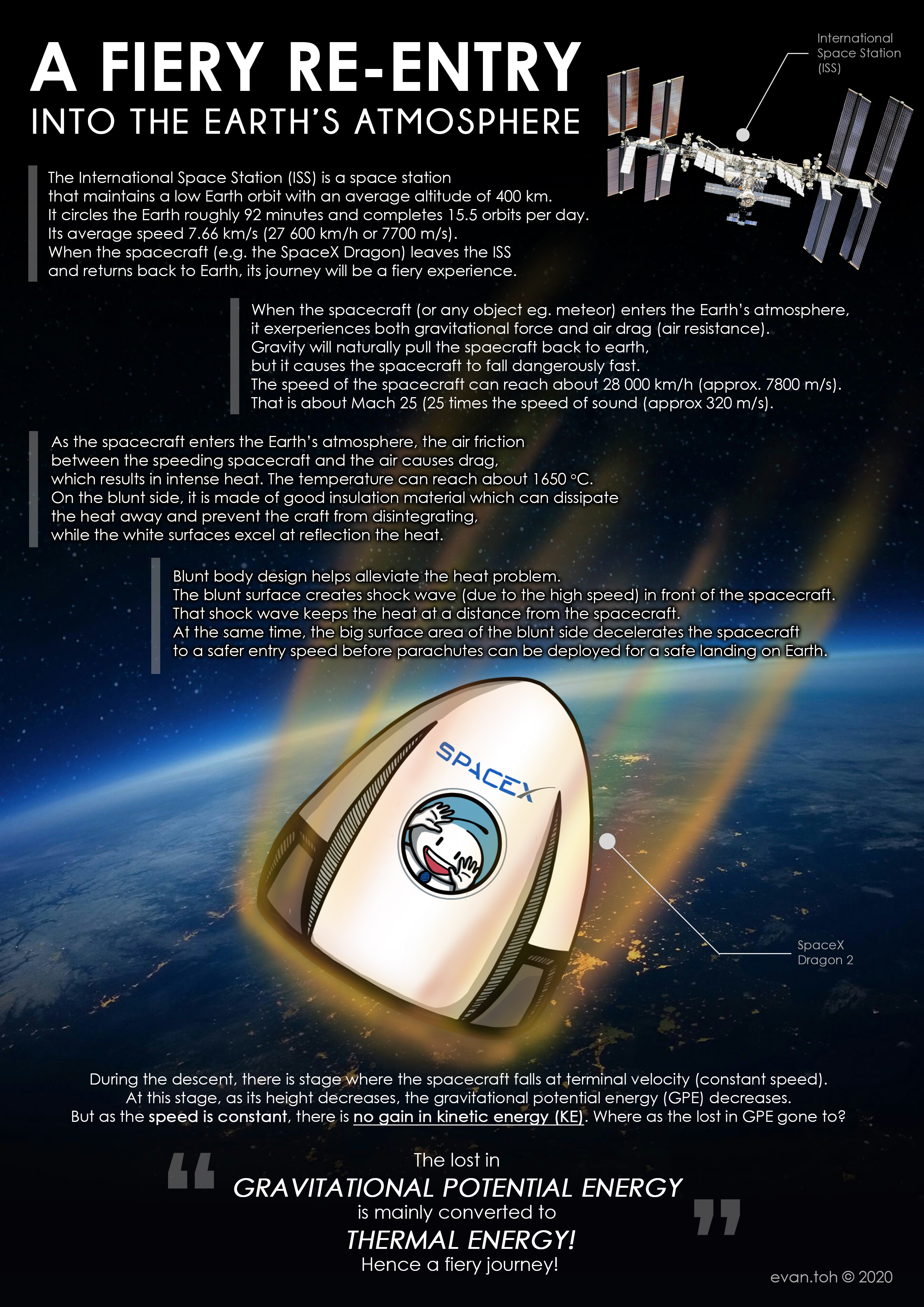
Answer: 800 oC

This post was updated following the first astronauts launched by SpaceX returned home safely on 3 Aug 2020.


SpaceX’s Crew Dragon heat shield shown off after first orbital-velocity reentry
How do spacecraft re-enter the Earth? | HowStuffWorks
Why Is It So Difficult For A Returning Spacecraft To Re-Enter Our Atmosphere?
Returning from Space: Re-entry – PDF format
SpaceX In-Flight Abort Test
SpaceX Falcon Heavy- Elon Musk’s Engineering Masterpiece
Shuttle Atlantis STS-132 – Amazing Shuttle Launch Experience
How to Land the Space Shuttle… from Space
First astronauts launched by SpaceX return to earth (3 Aug 2020)


SpaceX’s Crew Dragon heat shield shown off after first orbital-velocity reentry
How do spacecraft re-enter the Earth? | HowStuffWorks
Why Is It So Difficult For A Returning Spacecraft To Re-Enter Our Atmosphere?
Returning from Space: Re-entry – PDF format
SpaceX In-Flight Abort Test
SpaceX Falcon Heavy- Elon Musk’s Engineering Masterpiece
Shuttle Atlantis STS-132 – Amazing Shuttle Launch Experience
How to Land the Space Shuttle… from Space
The paper over metal or over plastic/wood will get burned faster?
Everyone knows that metal is a good conductor of thermal energy. But for experiments like this, many would have guessed it wrongly.
A paper is wrapped over metal and insulator (plastic, wood etc) and is exposed to the flame, the paper over the insulator becomes charred faster and burned faster.
The paper over the metal takes a longer time to be charred and burned. This is because metal is a good conductor of thermal energy. When the spot (paper over metal) is exposed to the flame, the metal conducts the thermal energy away from that spot to other parts of the metal. So the temperature increase at that spot is slower, hence the ignition temperature of the paper (approx. 230oC) will be reached much slower, compared to the spot where the paper is over an insulator.
At sea level (where most of us are), the standard atmospheric pressure is about 101325 Pa. The boiling point of water is at 100 oC which we are familiar with.
But as you climbed up e.g. Mount Everest at 8,848 m, the pressure is low and the boiling point of the water is about 71oC. So that’s the hottest cofe you can have on top of the cold mountain!
Hence as the pressure decreases, the boiling point of the water decreases. As with lower pressure, the water molecules requires lesser energy to break the intermolecular forces to escape into the atmosphere, hence boiling point is lower.
This video shows the same effect. Using the syringe, the air is pumped out of the container to reduce the pressure. The water at 75 oC , (below the usual boiling point of 100 oC) will start to boil and you can observe the bubbles forming!
The 3 states of matter – solid, liquid and gas.
In general, when a body is heated, it expands and volume increases. The mass remains the same. Since density = mass/volume, its density decreases (less dense). For instance, warm air rises as it is less dense. In terms of kinetic theory, the particles will increase in kinetic energy. The average spacing between the particles increases (assuming not in a closed container).
Likewise, when a body is cooled, the opposite occurs. The body contracts and volume decreases. It becomes denser.
Due to the differences in particles arrangement of solid, liquid and gas, each expands by different amount when heated and vice versa. Which expands the most when heated and contracts the most when cooled?
The following demonstration of the ‘Pee Boy’ is a good video to show the concepts.
Explanation:
The tiny hole at the penis is too small for any water to enter on its own. So using thermal transfer in the different states, the following steps are taken: